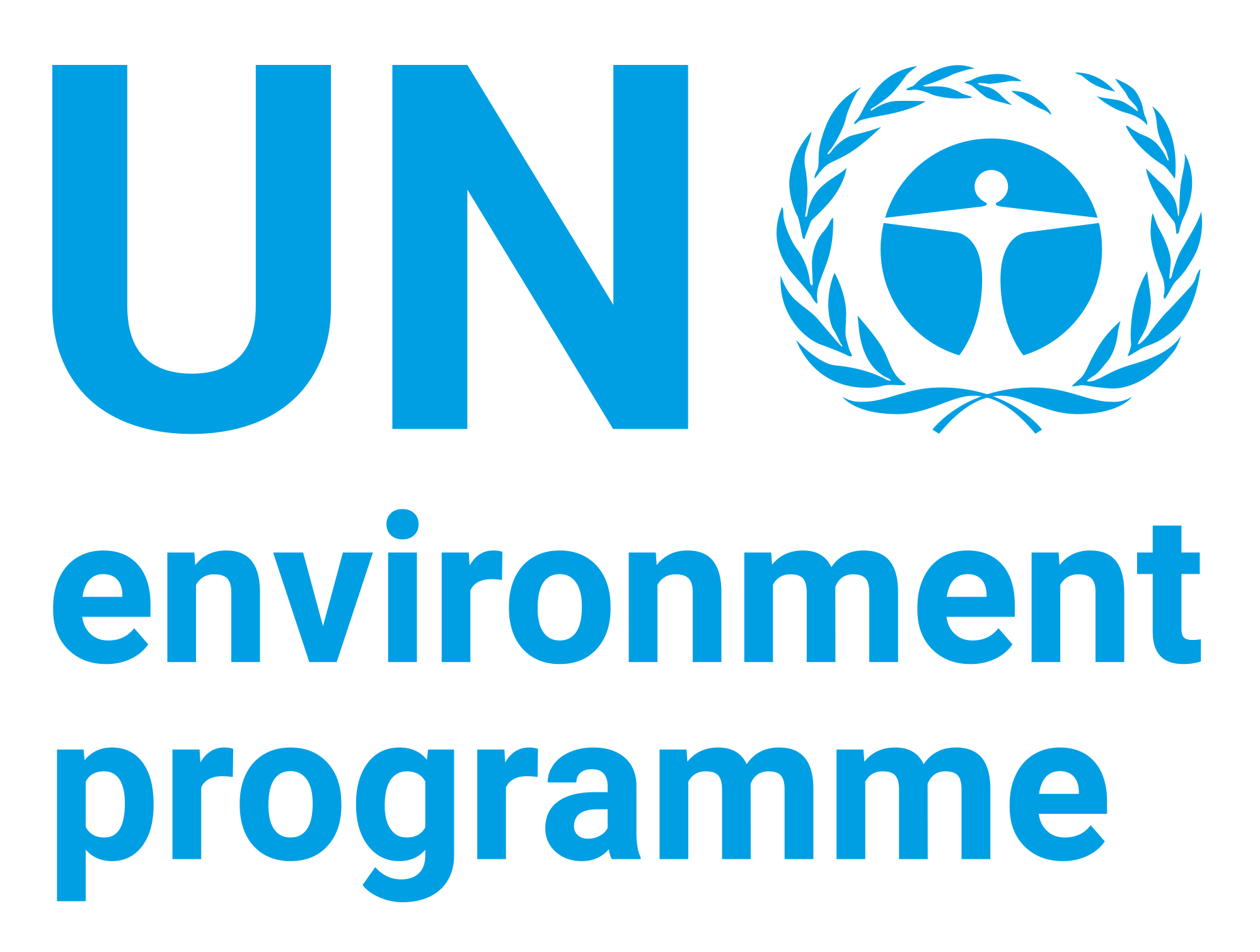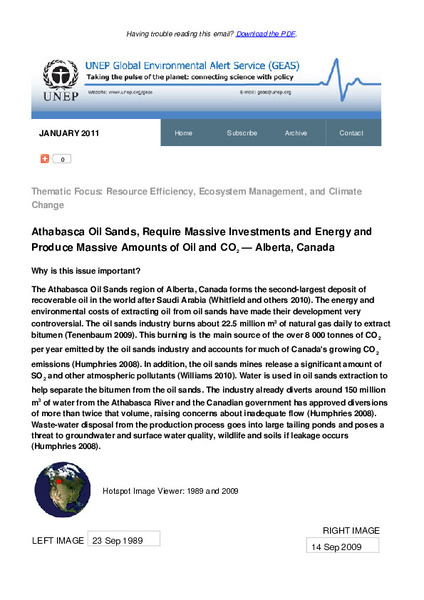| dc.contributor | Science Division | en_US |
| dc.contributor.author | United Nations Environment Programme | en_US |
| dc.coverage.spatial | Canada | en_US |
| dc.date.accessioned | 2022-10-19T21:57:37Z | |
| dc.date.available | 2022-10-19T21:57:37Z | |
| dc.date.issued | 2011-01 | |
| dc.identifier.uri | https://wedocs.unep.org/20.500.11822/40881 | |
| dc.description | The Athabasca Oil Sands region of Alberta, Canada forms the second-largest deposit of recoverable oil in the world after Saudi Arabia (Whitfield and others 2010). The energy and environmental costs of extracting oil from oil sands have made their development very controversial. The oil sands industry burns about 22.5 million m3 of natural gas daily to extract bitumen (Tenenbaum 2009). This burning is the main source of the over 8 000 tonnes of CO2 per year emitted by the oil sands industry and accounts for much of Canada's growing CO2 emissions (Humphries 2008). | en_US |
| dc.format | Text | en_US |
| dc.language | English | en_US |
| dc.relation.ispartof | UNEP Global Environmental Alert Service (GEAS) | en_US |
| dc.rights | Public | en_US |
| dc.subject | sand dune | en_US |
| dc.subject | carbon dioxide | en_US |
| dc.title | Athabasca Oil Sands, Require Massive Investments and Energy and Produce Massive Amounts of Oil and CO2 — Alberta, Canada - UNEP Global Environmental Alert Service (GEAS) January 2011 | en_US |


